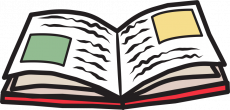The Secrets to Outstanding Literacy Lessons in KS1
In this blog, we'll explore the secrets to creating outstanding literacy lessons in KS1 that engage young learners and foster a love for reading and writing. Discover effective strategies, innovative resources, and structured planning techniques that enhance learning outcomes and support diverse needs in the classroom.
Engaging and Interactive Lessons
Outstanding literacy lessons in KS1 are engaging and interactive, capturing children's interest and enthusiasm. Engagement is crucial as it fosters a love for learning and makes the educational process enjoyable for young learners. When children are actively involved, they are more likely to retain the information and develop a deeper understanding of literacy concepts. 
Strategies to make lessons interactive and dynamic include the use of storytelling, role-playing, and interactive games. For example, teachers can use story mats like the Mighty Writer mat to help children visualise their sentences and stories. Activities such as group discussions and hands-on learning can make lessons more engaging, thereby improving literacy outcomes.
Enhancing Learning with Effective Resources
Effective use of resources, such as Mighty Writer, can significantly enhance children's learning experience. Quality resources provide a tactile and visual element to learning, which is particularly beneficial for young children who often learn best through hands-on activities. The Mighty Writer resource, with its colourful image tiles and sentence 'clouds', helps children understand sentence structure and develop their writing skills in an engaging way.
Incorporating such resources into literacy lessons can make abstract concepts more concrete. For instance, the velcro tiles and symbols represent different parts of speech, allowing children to physically manipulate and construct sentences. This not only makes learning fun but also facilitates better comprehension and retention of literacy concepts.
Structured Lesson Planning
A clear lesson structure, with well-defined objectives and outcomes, helps guide children through the learning process. Structured lesson planning involves setting clear goals for what students should achieve by the end of the lesson. This ensures that both teachers and children have a clear understanding of the lesson's purpose and the steps needed to reach the desired outcomes.
Steps to create an effective lesson plan include starting with an engaging introduction, followed by activities that build on previous knowledge, and concluding with a summary and assessment of learning. Examples of well-structured lesson plans, such as those included in the Teacher's Guide for implementing Mighty Writer, offer a roadmap to ensure that all necessary literacy skills are covered systematically.
Phonics and Vocabulary Development
Integration of phonics and vocabulary development within literacy lessons is crucial for building strong foundational skills. Phonics instruction helps children understand the relationship between letters and sounds, which is essential for decoding words. Effective phonics teaching strategies include using phonics games, songs, and activities that make learning phonics enjoyable. 
Strategies for effective vocabulary development include reading aloud to children, introducing new words in context, and encouraging children to use new words in their writing. Activities such as word maps and vocabulary journals can support vocabulary learning. The importance of phonics and vocabulary in building strong literacy foundations cannot be overstated, as these skills are critical for reading fluency and comprehension.
Adaptive Teaching for Diverse Learners
Adaptive teaching is key; lessons should cater to the diverse needs of all learners, including SENCO and EAL pupils. Adaptive teaching involves modifying teaching to meet the varying needs of pupils. This can include providing additional support or offering varied learning activities. 
Techniques and strategies for adaptive teaching can include using visual aids to contextualise information and providing hands-on activities, The benefits of this approach include increased pupil engagement, better understanding, and improved academic achievements for all learners.
Multisensory Approaches
Incorporating multisensory approaches can aid in better understanding and retention of literacy concepts. Multisensory learning involves using multiple senses simultaneously to enhance learning. This could include visual, auditory, kinaesthetic, and tactile activities that engage children in different ways.
Benefits of using multisensory approaches in literacy lessons include improved memory, greater engagement, and better understanding of concepts. For example, the Mighty Writer mat uses visual symbols and hands-on manipulation to help children build sentences. Discuss the impact of multisensory learning on literacy development, emphasising how it caters to different learning styles and needs.
Regular Assessment and Feedback
Regular assessment and feedback are essential to track progress and provide targeted support. Assessment can take many forms, including formative assessments like quizzes and observations, and summative assessments like tests and projects.  Regular assessment helps teachers identify areas where pupils are excelling and where they need additional support.
Regular assessment helps teachers identify areas where pupils are excelling and where they need additional support.
Providing constructive feedback is crucial for progress. Feedback should be specific, timely, and focused on improvement. Assessments and feedback guide future teaching, allowing teachers to tailor their teaching strategies to meet the needs of their pupils. This continuous loop of assessment and feedback ensures that all children make steady progress in their literacy development.
In conclusion, outstanding literacy lessons in KS1 are characterised by engagement, effective use of resources, structured planning, integration of phonics and vocabulary development, adaptive teaching, multisensory approaches, and regular assessment and feedback. By incorporating these elements, teachers can create a dynamic and supportive learning environment that fosters literacy development for all pupils.
Looking for more information on teaching Key Stage One literacy, including;
top 10 considerations, lesson plans, and top resources? Click below to access our brand-new resource!

